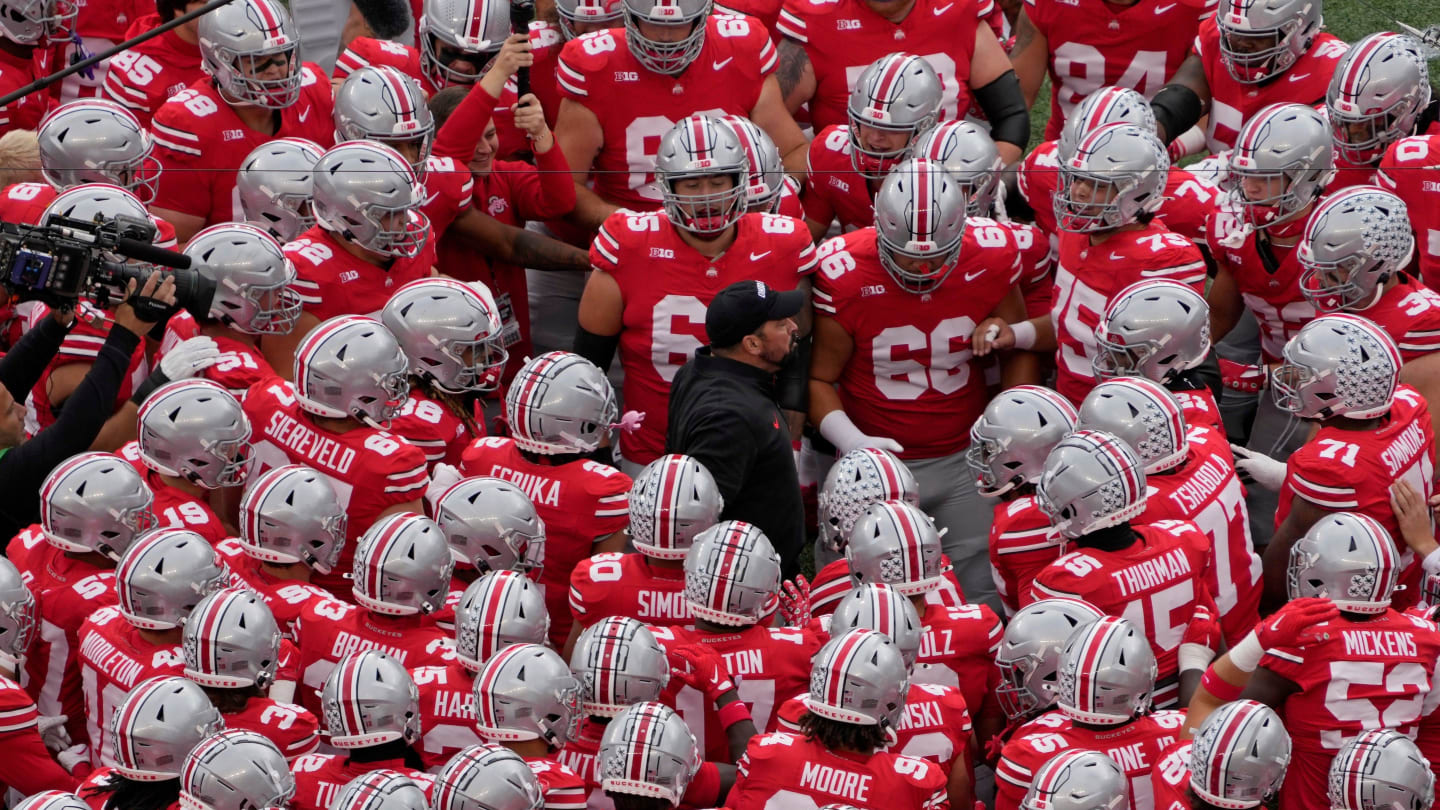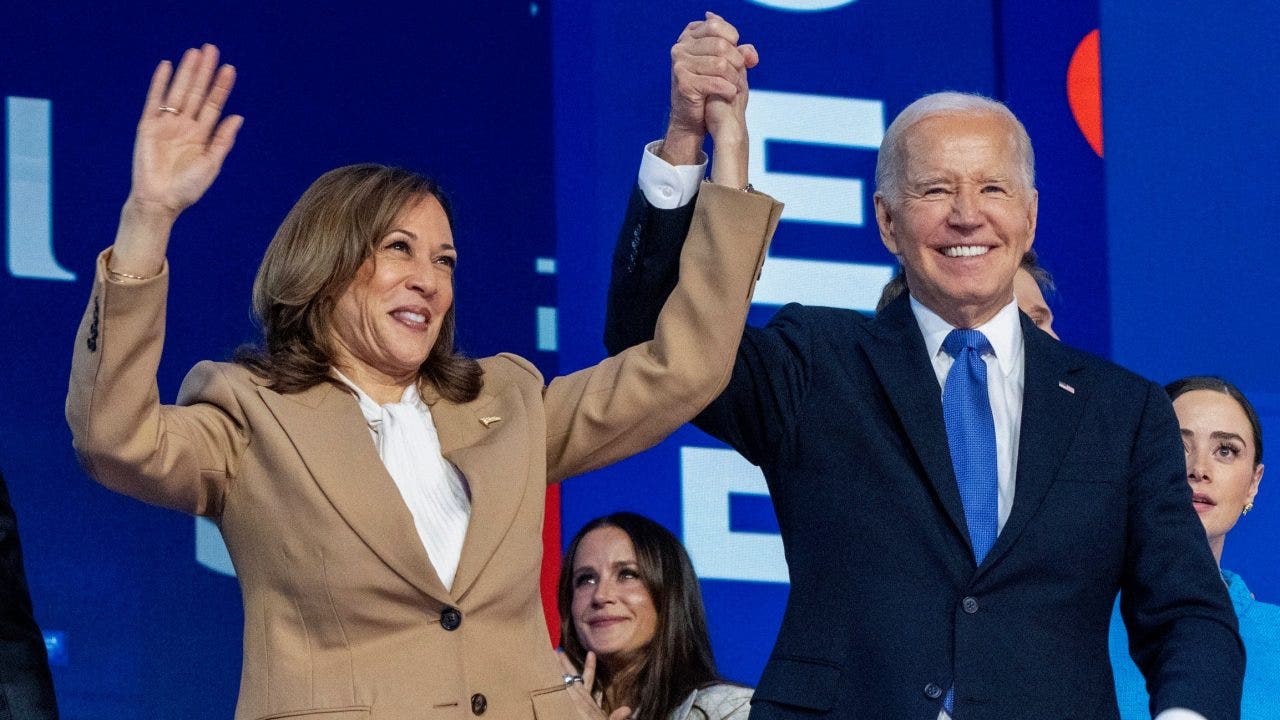Entertainment
Jay Kanter, film producer and agent for Marlon Brando and Marilyn Monroe, dies at 97

Jay Kanter, prolific film producer and agent to Hollywood notables including Marlon Brando, Grace Kelly and Marilyn Monroe, has died. He was 97.
Kanter died of natural causes Aug. 6 at his home in Beverly Hills, his son Adam Kanter confirmed.
The longtime studio executive began his career in the mailroom at MCA, working his way up to assistant to Lew Wasserman — who represented Bette Davis and Ronald Reagan, and later chaired MCA — and eventually, junior agent.
In 1948, Kanter, then 22, was sent to retrieve Brando — on the heels of his breakout role in Broadway’s “A Streetcar Named Desire” — from the train station. He drove the burgeoning star to his aunt and uncle’s home in San Marino, where they all had dinner.
The next day, after Brando’s meeting with director Fred Zinnemann and writer Carl Foreman, Kanter asked the actor to come to the MCA office to meet the other agents.
“[Brando] said, ‘I don’t have to meet anybody, you’re my agent,’” Kanter recalled in 2017.
At the time, he said, Wasserman was fielding calls nonstop from studio heads who were eager to sign Brando.
“Lew said, ‘Well, I can’t arrange it, you’d have to talk to his agent,’” Kanter said. “They said, ‘Who’s that?’ and he said, ‘Jay Kanter,’ and they said, ‘Who’s he?’”
A few years later, Kanter was representing a roster of A-list talent. And his meet-cute with Brando spawned a sitcom, “The Famous Teddy Z,” about a Hollywood star who picks out a mailroom clerk as his agent. (Kanter also allegedly inspired Jack Lemmon’s character in Billy Wilder’s 1960 comedy “The Apartment.”)
Jay Ira Kanter was born on Dec. 12, 1926, in Chicago to Muriel (Gordon) and Harry Kanter and spent his formative years in Los Angeles. At 17, he joined the Navy, then found his way to MCA after serving during World War II.
After the talent agency purchased Universal Pictures in 1962, Kanter relocated to London and for seven years green-lighted European movies for the studio. When Universal shuttered its European operations, he returned to the States to found a production company with industry executives Elliott Kastner and Alan Ladd Jr.
Kanter and Ladd spent much of the 1970s and ’80s working together at Fox, United Artists and the Ladd Co., going on to help produce blockbusters including “Star Wars,” “Alien” and “Blade Runner.”
Kanter also was longtime friends with comedy veteran Mel Brooks. The two in the 1990s began holding weekly lunches for a circle of former Fox executives and filmmakers. The week before he died, Kanter attended one such Friday lunch.
Brooks eulogized Kanter on the day of his death: “Very sad news today. I’ve known a lot of nice people in my life, but nobody nicer than Jay Kanter. If you knew him, you loved him. He was more than a legendary agent. He was a loyal friend, always there when you needed him. I know it’s a cliché but in Jay’s case it is just so true: he will be sorely missed.”
After his first two marriages — to Roberta Haynes and Judy Balaban — ended in divorce, Kanter in 1965 entered his third and longest marriage, to Kit Bennett, who died in 2014 after 49 years together.
He is survived by son Adam Kanter, from his marriage to Bennett; son Michael Kanter, from his third marriage; a daughter, Amy Kanter, from his second marriage; three stepchildren from his third marriage, Tom, Dustin and Cydney Bernard; and 10 grandchildren. Another daughter from his second marriage, Victoria Kanter Colombetti, died in 2020.

Movie Reviews
Film Review: The Deliverance – SLUG Magazine
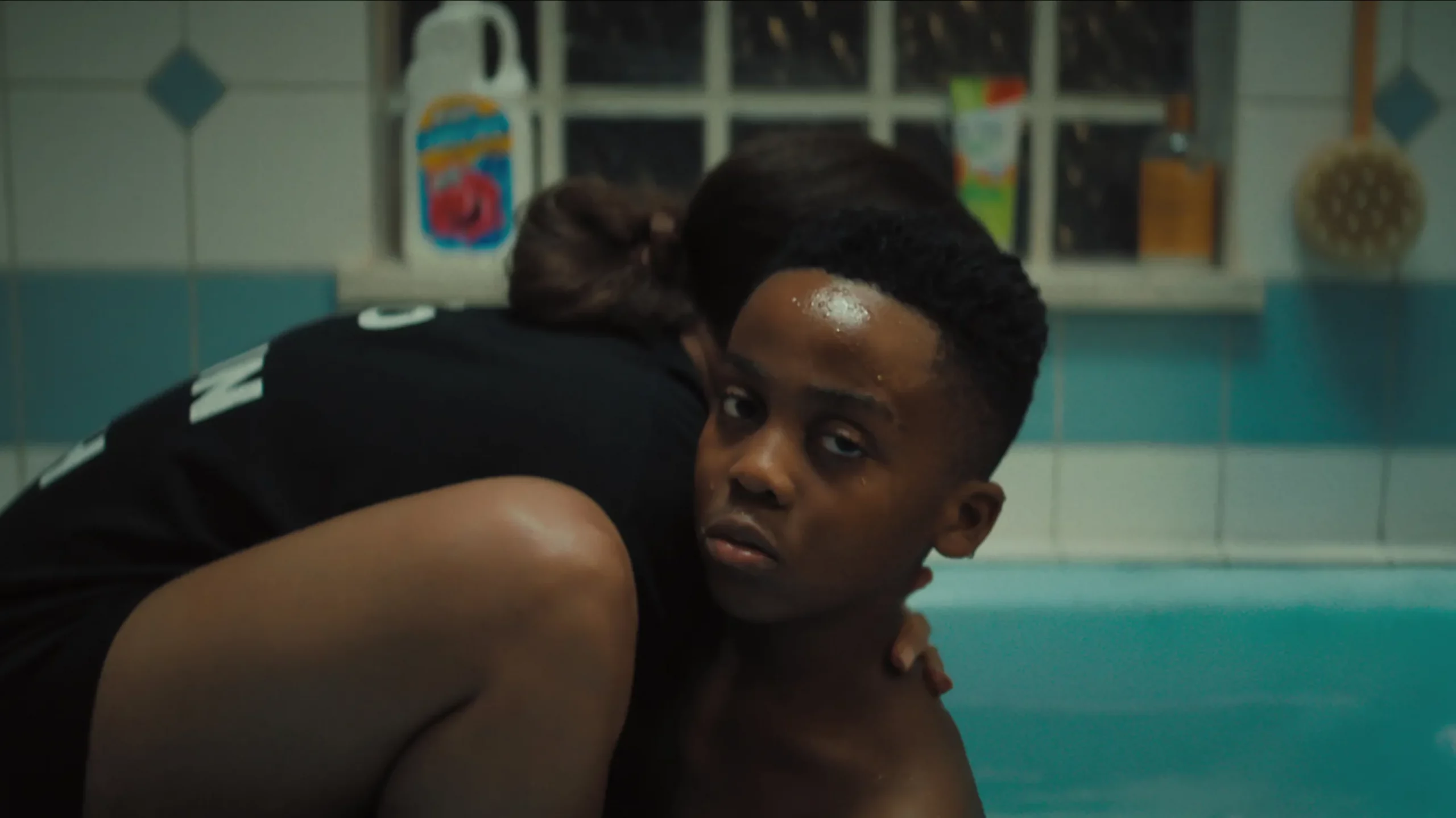
Film
The Deliverance
Director: Lee Daniels
Lee Daniels Entertainment, Tucker Tooley Entertainment and Turn Left Productions
Streaming on Netflix: 08.30
When I give a movie a weak review, more often than not it’s because, on some level, I feel that the director didn’t succeed at making the film they set out to make. When I given a scathing review, it’s usually because the movie they were trying to make was an awful idea from the beginning. And every so often, there’s a movie like The Deliverance that leaves me with no clue what the filmmaker was trying to achieve, yet no less certain that they failed at it.
Ebony Jackson (Andra Day, The United States vs. Billie Holiday) is a single mother struggling with a tough financial situation and far too frequently turning to alcohol to escape her problems. Ebony and her kids—Nate (Caleb McLaughlin, Stranger Things), Shante (Demi Singleton, King Richard) and Andre (Anthony B. Jenkins, Never Let Go)—hope to have a fresh start in Pittsburgh, with the help of her mother, Alberta (Glenn Close, Fatal Attraction, Hillbilly Elegy), a cancer patient undergoing treatment and newly-devout Christian who makes no secret of the fact that she disapproves of Ebony’s life choices. The tension between the two is palpable. Ebony is temperamental and frequently verbally abuses her children, even smacking them on occasion, and a social worker named Cynthia (Mo’Nique, Precious: Based On The Novel Push by Sapphire) is constantly looking over her shoulder, and not without reason. The children have unexplained bruises, Ebony is drunk at all hours of the day and she and her mother—who was abusive to Ebony as a child—are constantly fighting. The kids aren’t exactly having the time of their lives, as Nate faces bullying in the neighborhood, Shante pines for her absent father and young Andre finds solace in an imaginary friend named Trey. And just when it seems that things couldn’t get worse, in addition to their tendency to be covered in unexplained bruises, the kids all start to display frighteningly bizarre behaviorfirst at school, then at home—including speaking in tongues, climbing backwards up the walls, sobbing uncontrollably, and eating their own feces. It eventually becomes clear to Ebony that the kids are possessed, though, of course, no one believes her, so she brings in an expert, Reverend Bernice James (Aunjanue Ellis-Taylor, King Richard, Origin) to perform an exorcism. These demons aren’t going to go with out a fight (possession is nine tenths of the law, after all) and Ebony must battle the forces of evil for the very souls of her family.
The Deliverance is a disjointed mess, with much of the first half of the film being an involving family drama and shifting on a dime to become an insipid and exploitative inner city take on The Exorcist. Daniels was inspired by the Ammons haunting case of 2011, which also involved a mother using demonic possession to explain her kids frequent absences from school, as well as their bruises, and has been largely debunked. It’s very hard to get around the feeling that the film is in remarkably bad taste in regards to its treatment of child abuse, and it reaches a point where it becomes truly baffling. A message of avoiding a judgemental view of our neighbors and recognizing that we never know what a person is going through is certainly worthwhile. It’s at best questionable as to whether that should extend to giving the benefit of the doubt to an alcoholic parent who asserts, “I’m not hitting my kids, the Devil is!”. The movie is far too dark and disturbing in its depiction of real world problems to be fun in any way, yet when it moves into full on horror mode, it loses all credibility as fact-based drama, leaving the clear question: why does this movie exist? By the end of the film, Ebony’s choice to get back together with the kids’ father and “try to make things work” immediately had me wondering if I’d just watched a supernatural take on The Parent Trap.
Day gives an intense and riveting performance, making Ebony starkly human—even if she’s rarely likable—and she single-handedly gives the film redeeming value. Close is a legendary actress who is long overdue an Oscar, and as a big fan, it’s more than a bit frustrating to watch her reduced to seeing if she can get a Best Supporting Actress win out of playing a cancer patient on her deathbed who grows fangs when the demon takes hold and starts spouting obscenities and racial slurs. The combination of fangs and the baldness that comes with chemotherapy gives Close a vampiric appearance, and deliberately using the effects of cancer to make a character look more creepy is an odious ploy that needs to be called out. Daniels owes a lot of people an apology for this crass choice. Ellis-Taylor is effective as the wise Reverend, and in a different film it could be an effective performance, but her arrival here simply signals that the movie is going completely off the rails. The young actors who play the kids give impressive performances, but they all deserve a far better vehicle.
The Deliverance is the kind of movie that keeps your attention to the end, then leaves you feeling used and angry when it’s over. There’s no denying that there’s a certain degree of skill involved in the filmmaking, but it’s all put toward such an unworthy end that if anything, that just gave me more to hold against it. This isn’t the first time that a major Netflix original has left me wishing that it was getting a more substantial theatrical run, but it is the first time that my reasoning was the knowledge that it would largely be ignored in theaters, whereas it’s likely to hurt many an unsuspecting viewer on streaming. –Patrick Gibbs
Read more film reviews:
Film Review: Reagan
Film Review: You Gotta Believe
Movie Reviews
‘September 5’ Review: Peter Sarsgaard Stars in a Gripping Newsroom Thriller About the 1972 Munich Terrorist Attacks

At a time when world events are instantaneously reported on social media and news sites, it’s an enlightening, altogether gripping experience to watch a film like September 5, which depicts how a dedicated crew at ABC Sports managed to broadcast the 1972 Munich Olympics terrorist attacks live to an entire nation.
Not only does German director Tim Fehlbaum’s accomplished third feature detail all the logistical hurdles the team needed to scale so they could capture the crisis as it happened, relying on massive TV cameras, smuggled 16mm film stock, a slew of walkie talkies and plenty of ingenuity. Even more importantly, the movie tackles the tough questions faced by several hardworking newsmen — and one vital female translator — as they dealt with a situation in which many human lives hung in the balance.
September 5
The Bottom Line Riveting and relevant.
Venue: Venice Film Festival (Orizzonti Extra)
Cast: Peter Sarsgaard, John Magaro, Ben Chaplin, Leonie Benesch, Zinedine Soualem, Georgina Rich, Corey Johnson
Director: Tim Fehlbaum
Screenwriters: Tim Fehlbaum, Moritz Binder
1 hour 34 minutes
Those enduring questions, as well as intense, lived-in performances from a terrific cast, help to make September 5 more than just a time capsule about how the news was handled in the pre-digital age; it’s an account that speaks to our time as well.
Flawlessly blending tons of archival footage from September 5, 1972 — a day that now lives in infamy for those who were alive at the time — with uncanny behind-the-scenes creations of the ABC crew working overtime, and then some, to get it all on the air, the film focuses on the key players who fought to make it happen.
They include Roone Arledge (Peter Sarsgaard), the ABC executive in charge of broadcasting the ’72 Munich games; Marvin (Ben Chaplin), the team’s smart and testy head of operations; Marianne (Leonie Benesch), a local German translator; and Geoff (John Magaro), a young producer meant to cover an uneventful day of boxing and volleyball, who winds up landing on something much more significant.
Things start off ordinarly enough, with a sleepy TV crew settling in for their shift after a day which saw Mark Spitz famously take home a gold medal in swimming, But then gunshots are heard at the Olympic Village, which is just a few blocks away from ABC’s temporary headquarters. Geoff, who’s been left in charge while the higher-ups take a much-needed day off, soon finds himself doing everything he can to both figure out what’s happening and report it live to viewers back in America.
With the help of Marianne, who goes from being a neglected backroom interpreter to a major field reporter, Geoff and his team quickly realize that a pivotal and possibly world-changing event is under way: Palestinian terrorists, belonging to a group known as Black September, have killed two Israeli athletes and taken nearly a dozen others hostage, asking for the release of hundreds of prisoners in return.
This is all happening, of course, in Germany, at a time when the country was starting to publicly come to terms with the horrors inflicted on Jews during WWII. That history is not easily forgotten by Geoff and the others — especially Marvin, who’s the son of Holocaust victims and holds a major grudge against the Germans he comes into contact with.
Felhbaum, who wrote the script with Moritz Binder, delivers some early exposition about Marvin and the other characters during the film’s opening scenes, which kick off with an exposé depicting the ABC Sports crew at work behind-the-scenes. After that, September 5 quickly becomes a play-by-play account of how the Munich coverage came together, and it’s a riveting one to watch.
Among the many obstacles Geoff faces, one of the main ones involves getting footage of the building where the hostages are being held. Quick on his feet and unafraid to take major risks, he has his team wheel a giant newsroom camera onto a hill outside the office, while a smaller 16mm rig is smuggled — along with star reporter Peter Jennings (Benjamin Walker) — into a building across the street from the Israeli dormitories under siege.
But that raises another quesiton: How do you get the 16mm footage back out of a zone under police lockdown? Geoff again comes up with a crazy idea, dressing up a crew member (Daniel Adeosun) as a Team U.S.A. athlete and having him sneak back and forth with a few film cans taped to his body. The exposed reels are then developed in an on-site lab, with one of them revealing the infamous black-and-white shots of a masked Black September member lingering outside on the balcony.
September 5 doesn’t skimp on any of the technological details — we also learn that Jennings reported events over a telephone, with the receiving end rigged to a studio mic — but Felhbaum steps back often enough to help viewers see the bigger picture at play.
What happens if Black September winds up executing one of the athletes? Should the team also capture that live on television, possibly broadcasting it back home to the parents of David Berger, an American-born weightlifter competing under the Israeli flag? (The larger Israeli-Palestinian question, however, is never raised in the film, which keeps its eyes glued to events as they unfolded back then.)
Geoff is unsure how to handle things, caught between Marvin, who becomes the crew’s moral beacon, and Roone, who’s constantly fighting both his own network and others — including CBS, with whom they share the only available satellite link — to keep exclusivity over the story. The fact this is all being handled by newsmen more familiar with sports than terrorism adds another layer of intrigue, although September 5 suggests that it’s precisely due to the team’s experience with live events that they were able to succeed so well.
Even if you know how the Munich attacks tragically concluded, the film remains suspenseful to the end, focusing on characters trapped between their desire to accomplish their jobs and their awareness of what’s exactly at stake. Magaro (Past Lives, First Cow) encapsulates that dilemma perfectly — as does the rest of the cast, with talented actress Benesch (The Teachers’ Lounge, Babylon Berlin) playing someone in a particularly tough spot, serving as a middleman between the Germans and Americans.
While the equipment back in 1972 was limited to shaky 16mm or gargantuan studio rigs, Fehlbaum and cinematographer Markus Förderer have more gear available to them now, though they keep the camerawork over-the-shoulder and intimate to better focus on the performances. Editor Hansjörg Weissbrich expertly cuts in all the archive news footage from the time, so we only see what was really shot by the ABC Sports crew instead of recreations of those images.
The gritty and naturalistic aesthetic seems worlds away from Fehlbaum’s previous feature, an ambitious sci-fi drama called The Colony. And although the director surely took some liberties with what actually happened inside the ABC newsroom, he never loses his focus on the lasting importance of reporting real, and not fake, news in the most relevant way possible.
Entertainment
If you're a parent, Lauren Greenfield's new doc about teens and social media 'is a horror movie'
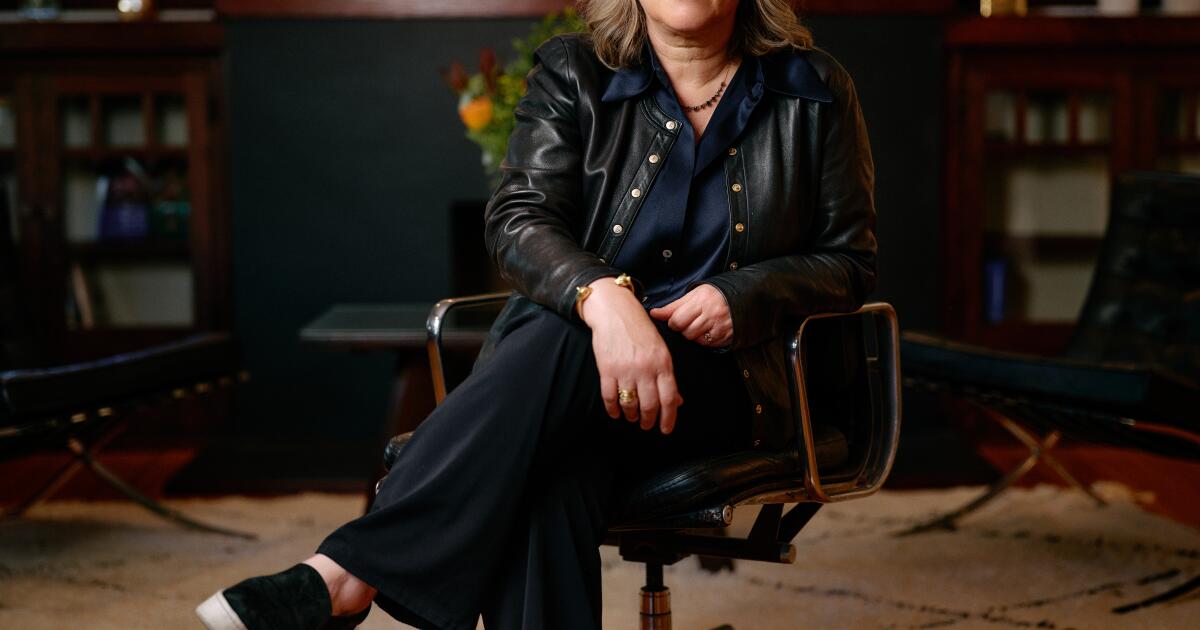
Documentary filmmaker Lauren Greenfield had spent her day with a group of high school students when a startling revelation came up that compelled her to go home and ask her two sons, then about 14 and 20, a question: “Is BDSM really a trend?”
“Oh, yeah, choking is what we’re told girls want,” she recalled one of her sons saying in reference to the risky sexual practice that some teens engage in.
It was 2021 and Greenfield was in the middle of her latest creative frontier: delving into the lives of the first generation raised on social media.
She was interested in unlocking an intimate glimpse of how social media has shaped adolescent minds after seeing her own kids’ distinctive relationship with it.
“They’re different generations,” she said recently from her office in Venice. “My eldest is a reader, my youngest gets his news from TikTok. Just seeing the difference and being concerned about the younger one being on a lot was part of the inspiration for this.”
“Social Studies,” a five-part series premiering Friday at the Telluride Film Festival in Colorado and arriving Sept. 27 on FX, is Greenfield’s latest foray into documenting teen life in Los Angeles.
Her body of work, which includes 2012’s “The Queen of Versailles” and 2019’s “The Kingmaker,” has long chronicled beauty, wealth and power — and the damaging toll of it in excess.
But she’s held a perennial interest in youth culture: “Fast Forward: Growing Up in the Shadow of Hollywood” is a collection of photos and narratives of Los Angeles youth in the 1990s; “Girl Culture” captured the effects of American popular culture on young girls; and her short film “kids + money” features L.A. teens discussing money.
“When I did ‘Fast Forward,’ which was my first project, I was in a very different phase of life,” said Greenfield, who attended the private Crossroads School in Santa Monica as a teenager. “I was just out of college, just starting my career. I very much identified with the kids.”
But for “Social Studies,” “I came to this project as a mother, in terms of how the kids see me,” the filmmaker said.
Dependence on devices and time spent on social media rose dramatically during the pandemic, as restless, isolated teens looked for an escape. In 2021, the surgeon general issued a public health advisory on teen mental health; however, research hasn’t found a direct link between the crisis and social media use.
Sydney, standing to the right, in her freshman dorm room at the University of Arizona. Her relationship to social media, and the temptation to project a sexualized image, is explored in “Social Studies.”
(Lauren Greenfield / Institute )
Greenfield’s series explores the everyday pressures teens confront that have been intensified by social media, including bullying, body-image issues and comparison culture.
“‘Fast Forward’ was all about media influence and how kids were being changed and impacted by media influence. I called it the influence of Hollywood because I was specifically looking at celebrity and image culture and materialism,” Greenfield said. “I wanted to come back and explore the same subject but with this new influence of social media. It was similar but amplified. Social media was everything I had looked at throughout my career but on steroids.”
The series was largely filmed in Los Angeles and features teens from 10 schools, including Pacific Palisades, Los Angeles and Hamilton high schools. Greenfield shot roughly 1,200 hours of footage over 150 days — covering the 2021-22 school year and some subsequent months. She also recorded the teens’ phone and social media use.
The teens who open up their phones and their lives include Sydney, who grapples with curating her social feeds with provocative videos and images of herself; Ellie, who had a taste of viral fame after her relationship with actor Jack Dylan Grazer (nephew to mega Hollywood producer Brian Grazer); and Jonathan, who volunteers at Teen Line, the nationwide nonprofit hotline. A filmmaker himself, Jonathan sets out on a parallel journey, making a movie about teen life with many of the same subjects while taking part in Greenfield’s documentary.
The series arrives at a pivotal moment. On Wednesday, California legislators passed the Phone-Free Schools Act, which would require public schools to create policies to limit or prohibit cellphone use by 2026. The Los Angeles Unified school board already passed a measure this summer to ban phones on campus; it’s expected to take effect in January.
In a conversation earlier this month, edited here for length and clarity, Greenfield discussed how she treated her young subjects as experts, the ease in capturing teens authentically and why parents should watch.
1
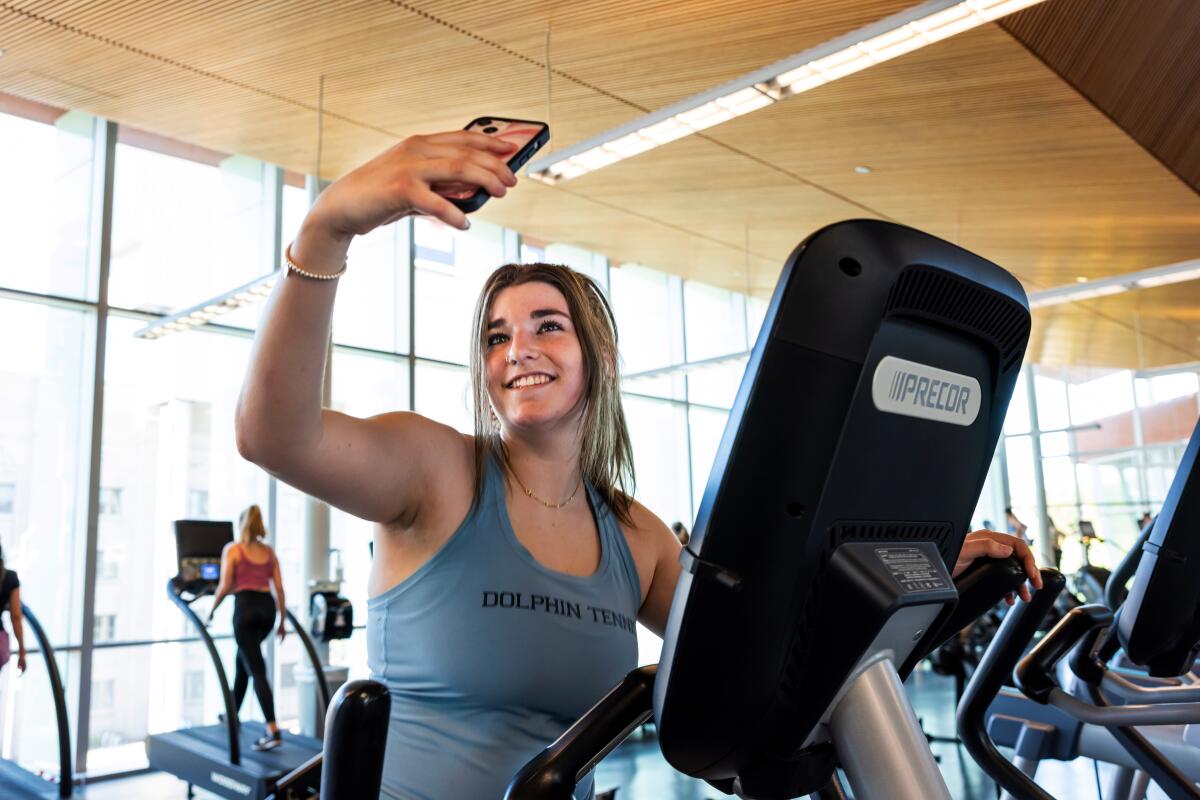
2

1. Sydney in “Social Studies.” (Lauren Greenfield / Institute ) 2. Ellie, right, in “Social Studies.” (Lauren Greenfield / Institute )
So much of what you’re after is capturing your subject in a raw and authentic way. And when you’re dealing with kids who have grown up in this digital era, where so much of the image they put out there is curated, I imagine it was challenging to know when you’re really getting the authentic piece.
Surprisingly, I felt like they really brought themselves. I remember the first group session, nobody dressed up. It wasn’t even like school, which is a bit of a fashion show. It was more like camp. People were not wearing makeup, they were not curating outfits.
I remember a long time ago, somebody told me, “If you spend enough time, you really get authentic selves,” because posing or pretending takes a lot of energy, and eventually, it’s too taxing. That’s always been really important to my work, slow journalism. There’s always a process of people becoming more and more comfortable with you. I also started with a little bit of a bigger group than I ended up with, but the ones whose stories I really followed, we became very close, and I depend on that. They have to let me know something is happening so I can go and be there. And so they opened up more and more. I felt like by the end, they really presented their authentic selves.
For this one, everybody knew we’re looking at social media and its impact, and even in terms of who I selected, the kids had to care about that because it’s a lot to open up your lives. I think a lot of the kids felt a sense of purpose in doing that.
Having conversations with teens, particularly ones you don’t know, can be challenging. In addition to one-on-one interviews, you held group sessions. It felt a little bit like “The Breakfast Club.” Kids who maybe wouldn’t ordinarily talk to each other are in this room together, realizing their commonalities. Did you see that as a way to get your subjects comfortable?
I like that you said “The Breakfast Club” because that was a little bit of inspiration. The first seven groups I did, we weren’t even filming them as groups yet. I just wanted to hear what they thought was important, what I should cover, what were the problems. I wanted to be led by them. One of the big impetuses for this is I felt like the kids are the experts. We’ve seen experts talk about this topic, we’ve heard from parents, we’ve heard from tech, we’ve heard from legislature leaders, but I feel like the kids were the experts. One of the things I really tried to do was capture the duality of them being both subjects and experts.
There’s three elements: There’s the vérité — where we see them in their lives, sometimes they’re posturing, sometimes they’re presenting, sometimes they’re with friends, sometimes they’re lying. There’s the interviews where they’re just brutally honest, they break the fourth wall, they tell me the truth. That was really interesting, because also we have their social [media screen capture,] so we see the difference between what they’re saying and what they’re showing. And then the third perspective is the group where they’re talking to each other, and there they also were very honest. Sometimes they said it was almost like therapy; it was a place where they could talk about things that were affecting them all the time.
1
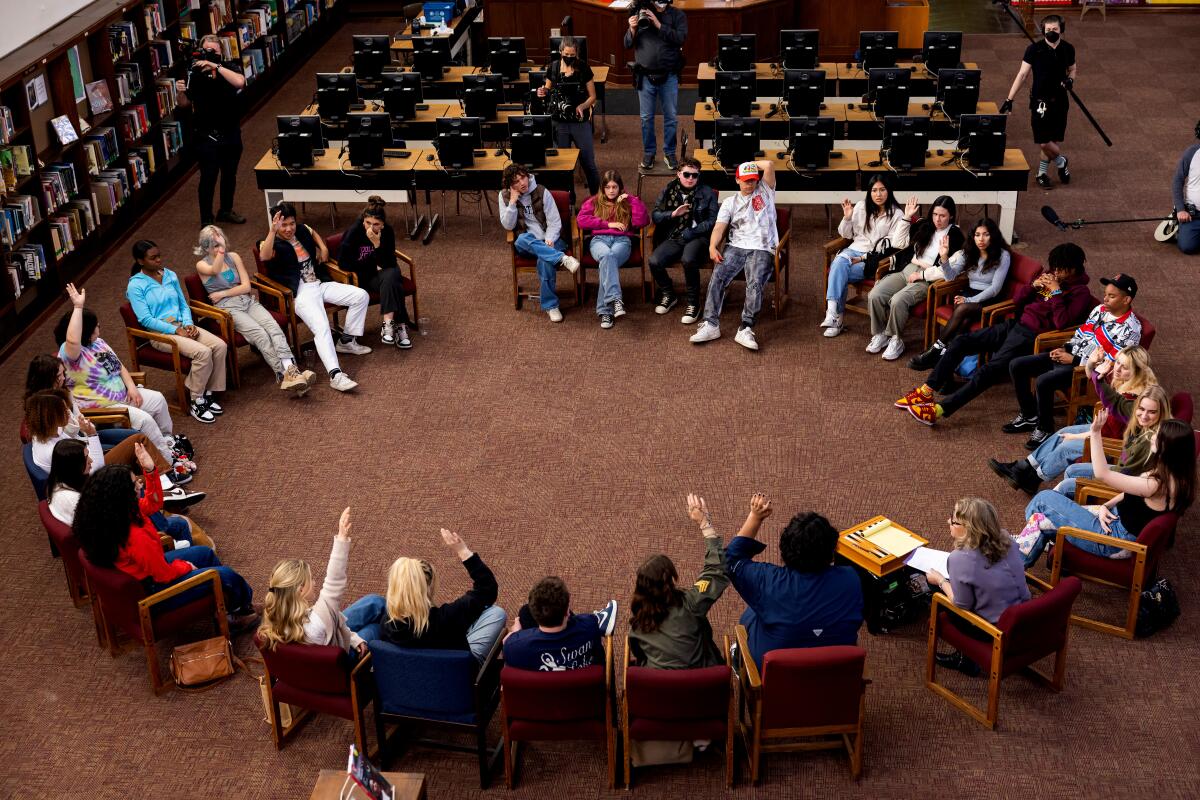
2
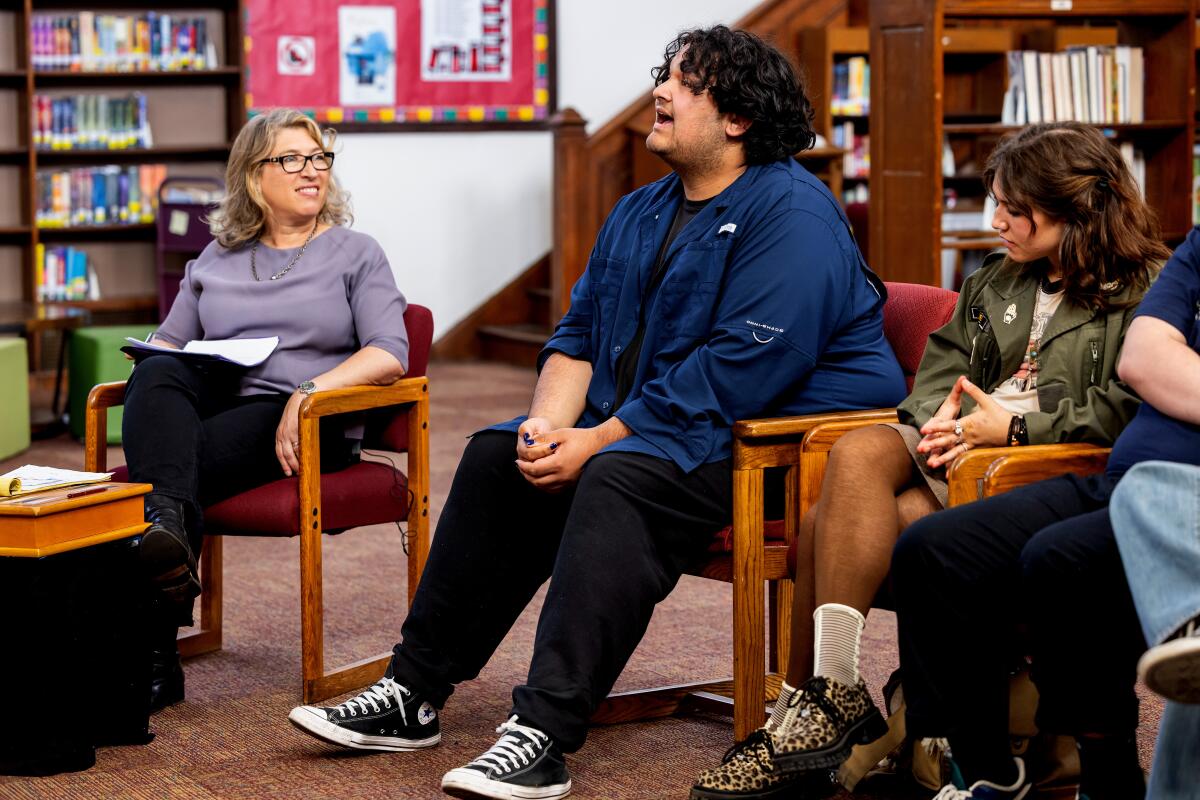
1. Teens featured in “Social Studies” gather for one of the group discussions held by filmmaker Lauren Greenfield. (Lauren Greenfield / Institute ) 2. Dominic, center, speaks during one of the sessions. (Lauren Greenfield / Institute )
One of the striking elements to the series is that you’ve asked your subjects to screen record their activity on their phone. How important was that piece?
So important. I feel like it’s a time capsule of the culture, the stuff that we captured. It’s really shocking to see how the algorithm works, to see how toxic some of the rabbit holes can be and to see the details of it. In the series, I didn’t want to have it be two worlds, like cut to a screen on black. I wanted a lot of the social that we’re seeing to be on top of the live action. I really wanted to show that these worlds are intertwined, intermixed, multitasking, and sometimes they’re opposing each other. Sometimes there’s fiction and nonfiction. I don’t want to give away too much for the audience, but I think there’s a lot of really shocking content.
And my hope for the series, ultimately, is that it leads to some kind of regulation. “Fast Forward” was about the early loss of innocence in the ’90s. Now, there’s no innocence. There’s no childhood. You can’t keep your child from seeing devastating things, and they can’t even keep themselves from it, in the sense that the algorithm is going to take you by the hand, and whatever you’re curious about, feed you more and more stuff, and whatever your weakness is, it’ll pull you further into that. And the companies that are creating the algorithm are not doing it with the kids’ best interest in mind. They’re doing it with the interest of keeping them engaged on the platform.
The other theme that’s gone through all of my work, which came back here with a vengeance, is addiction, because it’s really addictive. I struggled with my own son to give limits. But what I realized when I was doing this is, it’s not fair to ask kids to regulate themselves. It’s like opiate addiction.
With fictional depictions of teen life — whether it’s “Euphoria,” “Thirteen” or even “Beverly Hills, 90210” — it’s easy to say, “That’s the extreme, it’s not really like that for teens.” But the first episode of this series is pretty jarring.
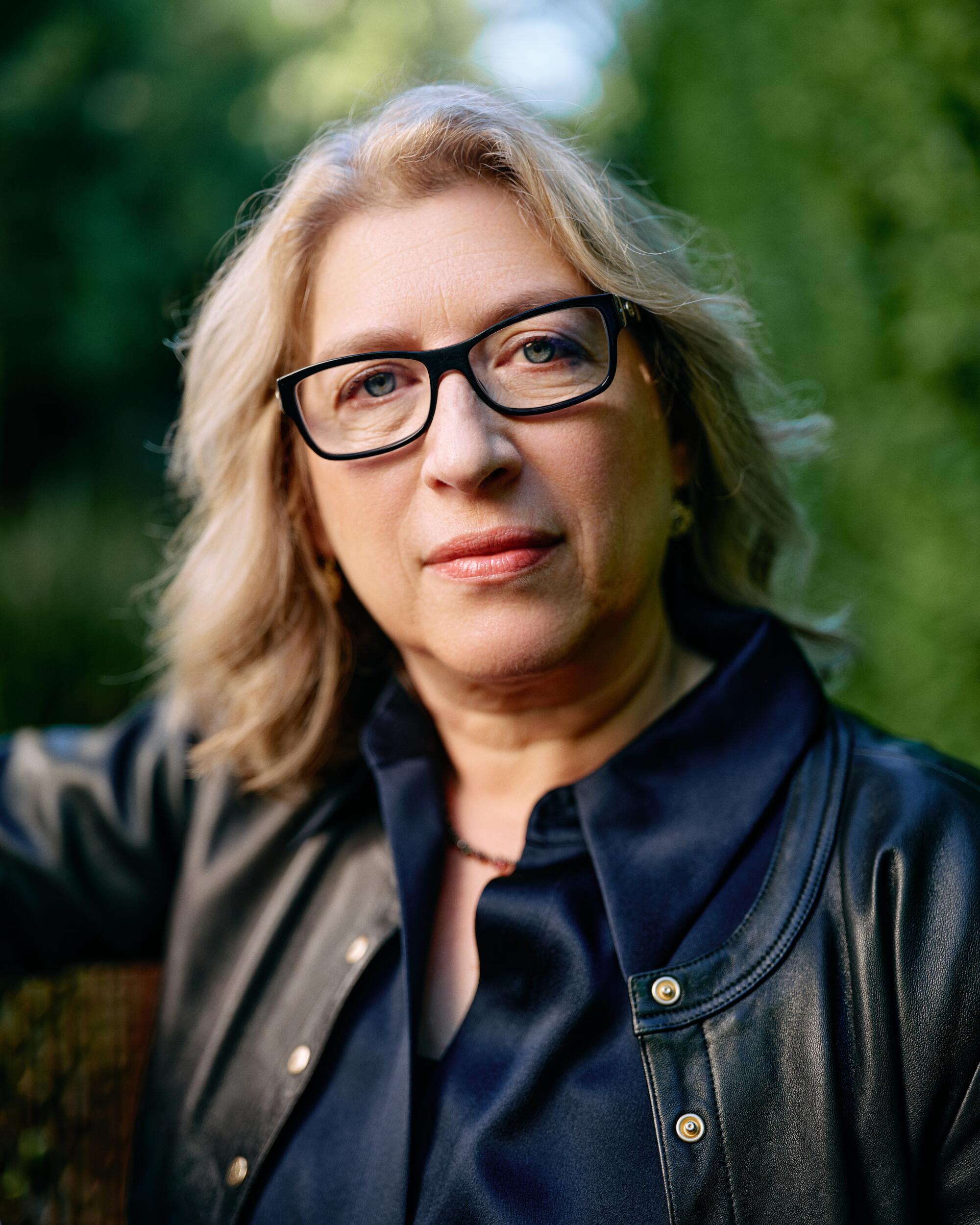
Filmmaker Lauren Greenfield: “My hope for the series, ultimately, is that it leads to some kind of regulation.”
(Marcus Ubungen / For The Times)
When I was doing feedback screenings, I showed [filmmaker] Nicole Holofcener, and after the first episode, she said, “This is a horror movie.” I don’t think it’s a horror movie for kids, though. I think that kids — and also 20-somethings, because I did some feedback screenings with those groups — see themselves. I think the kids are saying: “We need to talk about this.” There’s one part where Sydney’s mom’s like, “I don’t want to go in my kids’ TikTok.” But what I’m trying to do is say, “We need to be in this business. We need to have them share their experience.” What I love is that the kids are the ones who are saying, “This is concerning.” They’re saying, “You need to pay attention.” By the way, the parents — and I’m guilty of this myself — are posting on Facebook, I did this, I did that, but not always realizing how toxic it is.
Right. Sydney’s mother talks about her own social media use, specifically Facebook. How much did you want to hear from the parents?
At first, I wasn’t planning on including the parents. I thought it was going to be more like Charlie Brown, where the parents don’t understand and they’re in the background. Sydney’s mother was a really important voice. I feel like the parents are responsible, loving parents for the most part and yet have no idea. It’s not that they don’t want to help their kids, it’s like they don’t know what’s going on and they don’t know how.
With Sydney’s mom, there was a scene that I filmed where Sydney’s mom was like, “Don’t wear that short skirt outside.” She is an enlightened woman who doesn’t like the sexualization, but it’s a really hard thing to come down on because there’s a feeling among girls, and I’ve seen this in my own capturing of feminism and new feminism, where girls feel like showing their bodies is their right and their self-expression and they want to own that. And from my generation of feminism, I feel like that is not your voice and that it may feel like self-expression, but actually, it’s making the body the primary expression of identity. I don’t think it is good for either girls or boys.
I really tried to not fault the parents because I feel like I also did not know what was going on with my kids. Like I said, I have to sit down at the table and be like, “Is BDSM really a trend” to my teenagers? I was sure they were going to say no, and when they said yes, I almost fell out of my chair.
What were those conversations like to get parents of the teen subjects in the film on board?
I think a lot of them looked at my other work and could see this isn’t entertainment. It’s purpose-driven, and not everybody opted in, but the ones who did saw it as an interesting opportunity. We started talking to kids and parents in spring 2021 and we didn’t start [filming] until August 2021. I’m really grateful to the kids and the families because it was a lot to ask.
What is the push and pull of wanting to provide this anthropological look at teen life today while, in turn, asking them to put themselves out there on, arguably, a more mainstream platform as a TV series?
For one, in terms of choosing kids, of course, one of the big subjects around social media is fame. And one of the things I was looking at was fame as a value and how values have shifted. Even when I was doing “Generation Wealth,” I was really struck by, when you ask kids what they want to be when they grow up, they say rich and famous instead of a particular job. So when I was looking for kids, I did try to correct for not bringing in kids that wanted to be in this project to be famous. It wasn’t as much of an issue as I thought, because I don’t think any of them thought that this was a way to be famous.

Jonathan films Sydney, 18, in her bedroom. He’s a videographer at his school and began to chronicle the other students in the group for his own documentary.
(Lauren Greenfield / Institute )
One of your teen subjects, Jonathan, also felt inspiration to make his own film, and there’s a bit of parallel documenting that happens. What piqued your interest about his approach or his perspective?
It’s a big thing when you allow yourself to be in a documentary, so I feel like everybody has to get something out of it. And lots of the kids were makers. Jonathan was the videographer for the school, and that was one of the things that was appealing about him. Plus, he had a different relationship with social media. He wasn’t a poster; I didn’t want everybody being big posters. And he was very serious about his filmmaking. And he wanted to interview kids from our group. He was on this parallel journey with me.
Jonathan offered a lot; he’s a very empathetic person in a time of narcissism and a culture of narcissism, and I think he’s part of what we need. Empathy is another antidote to narcissism and focusing a lot on yourself and being in this feedback loop with yourself.
What do you want audiences to take away after watching this documentary?
Empathy, connection. When they say at the end, “Here we are without phones; we’re just talking” — it’s so great. One time when I was watching that, I almost just started laughing because it’s like a revelation— we’re without phones, we’re talking and it’s so amazing.
It’s a really hard time to grow up. I do think kids show resilience and wisdom, but they do that in the face of a really challenging environment, and ultimately, the adults are responsible for this environment. That’s what I hope we take away: We need to do something about it, to protect kids, because it’s just not fair to ask them to protect themselves.
-

 Connecticut7 days ago
Connecticut7 days agoOxford church provides sanctuary during Sunday's damaging storm
-

 Technology1 week ago
Technology1 week agoBreakthrough robo-glove gives you superhuman grip
-
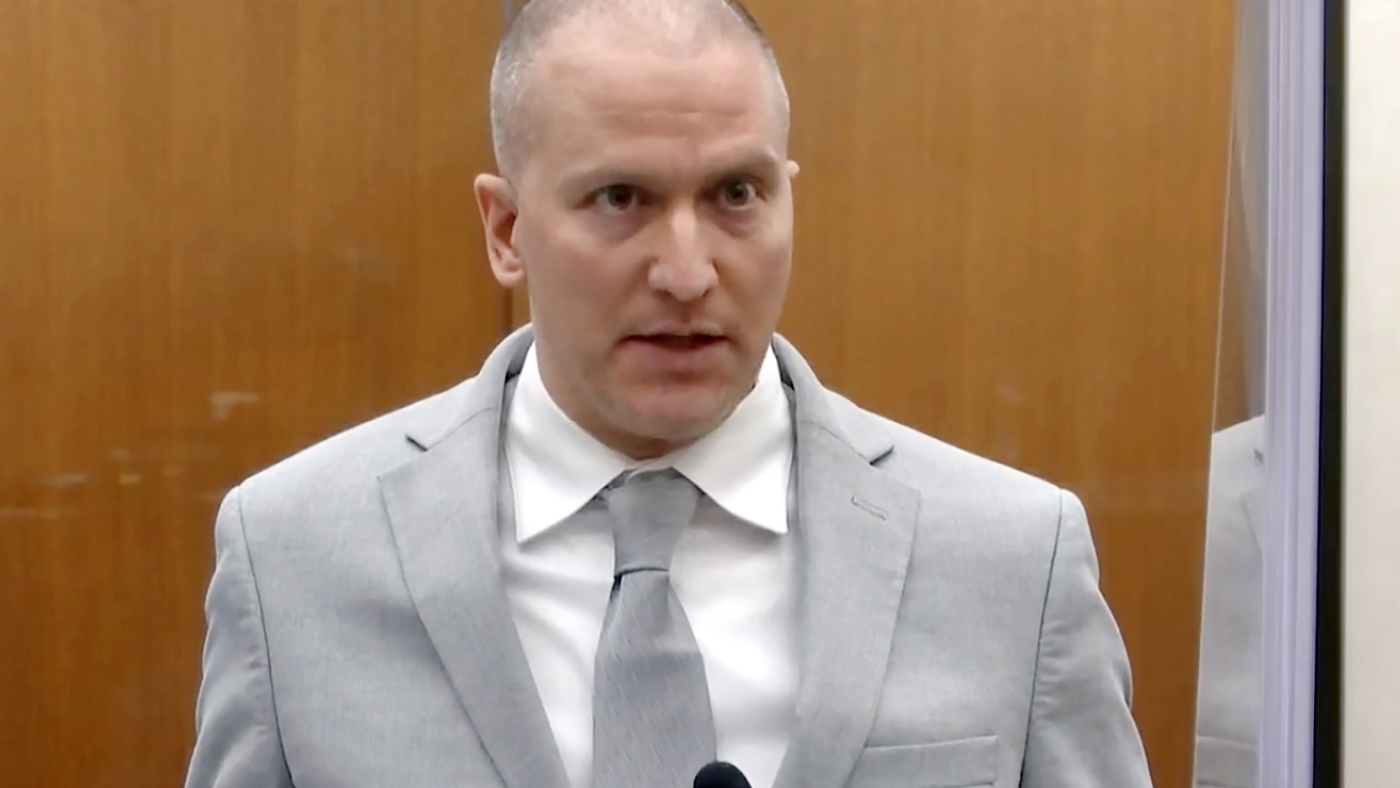
 News1 week ago
News1 week agoEx-officer convicted in George Floyd's killing is moved to new prison
-
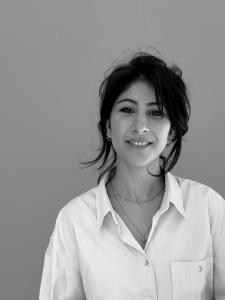
 Movie Reviews1 week ago
Movie Reviews1 week agoThe Substance – NZIFF Closing Night 13th Floor Film Review
-

 News1 week ago
News1 week agoVideo: D.N.C. Holds Enthusiastic Roll Call to Nominate Harris
-
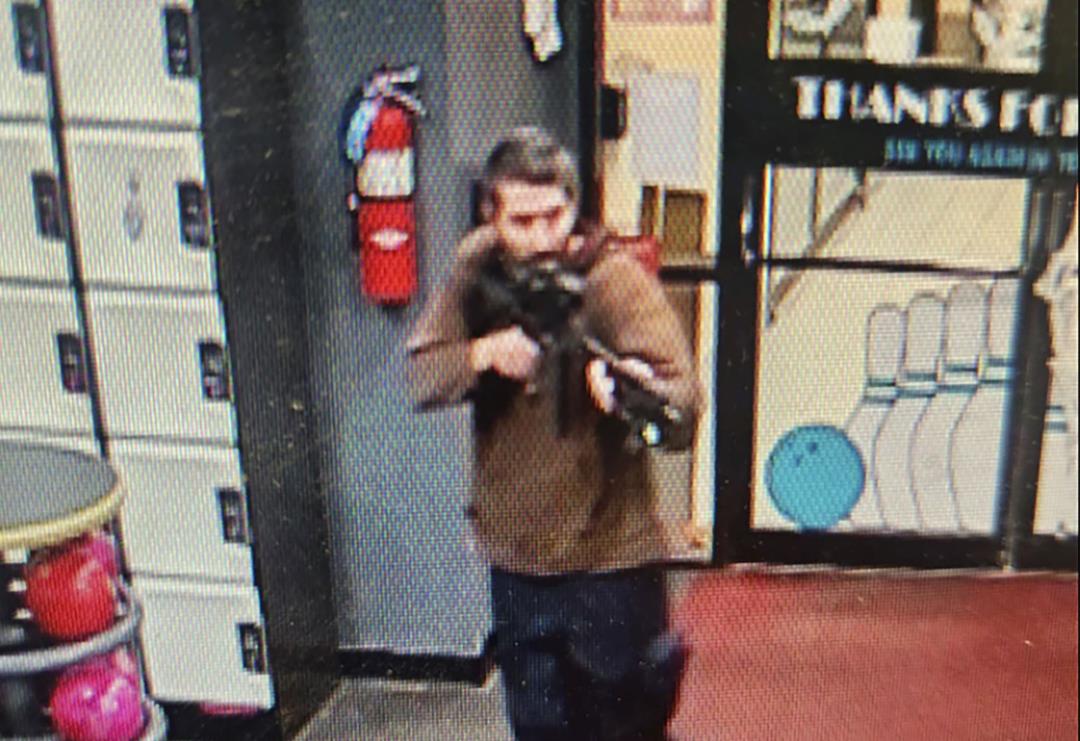
 News1 week ago
News1 week agoBefore Mass Shooting, Army Supervisors Ignored Advice
-

 World1 week ago
World1 week agoWhat has caused the cholera outbreak in Sudan?
-

 News1 week ago
News1 week agoVideo: Biden’s Speech at the Democratic Convention

